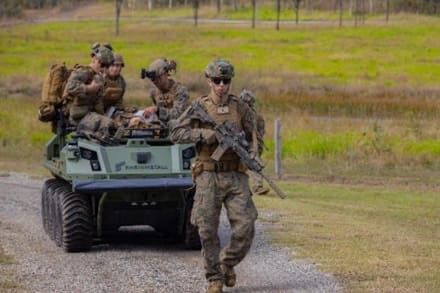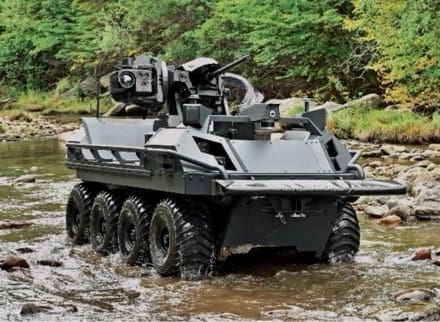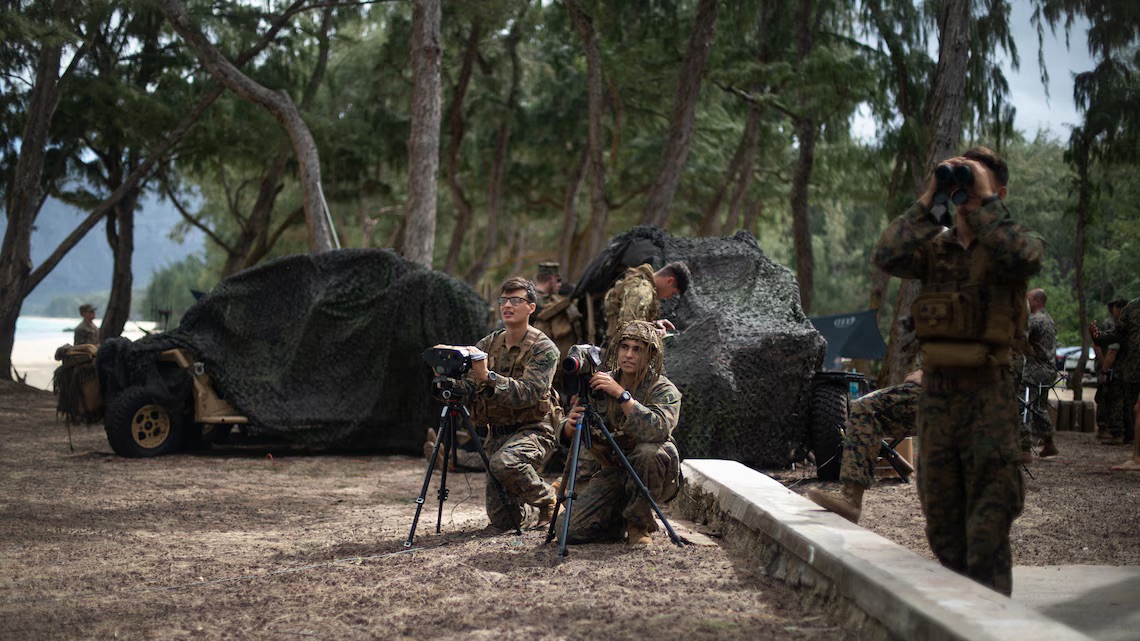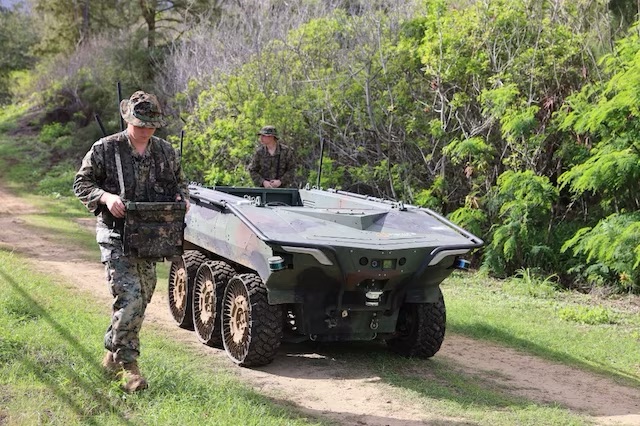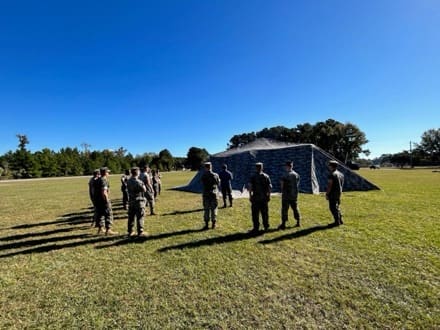
Marine Corps Base Quantico, Va. —
The global security situation is rapidly changing, and the international order established by the United States and its allies following the fall of the Iron Curtain is presently being challenged by adversaries who seek to shift the long-established balance of power.
The Pentagon has called on the joint forces to shift their strategic focus from the land wars in the Middle East to the growing challenges along the global littorals, while at the same time, experts have warned that the next global conflict will be fought and won—in large part– on the electromagnetic spectrum– the electromagnetic frequencies used for military communications, intelligence, and combat operations.
On this rapidly evolving battlefield—naked to the invisible eye– securing the electromagnetic spectrum extends beyond merely keeping the warfighter safe; it is about defending the very capabilities that render them lethal. This encompasses protecting both the warfighter and the advanced technologies and systems that amplify their effectiveness and lethality in combat. Ultimately, this helps protect lives and ensure the survivability of systems under observation and attack.
“Due to advances in peer competitor technologies, operating securely in the electromagnetic spectrum is foundational to contested logistics operations. It ensures our ability to sustain forces in adversarial environments, enhancing both our resilience and tactical flexibility,” said Col Paul Gillikin, Program Manager for Combat Support Systems, or PM CSS.
ULCANS: an Invisibility Cloak?
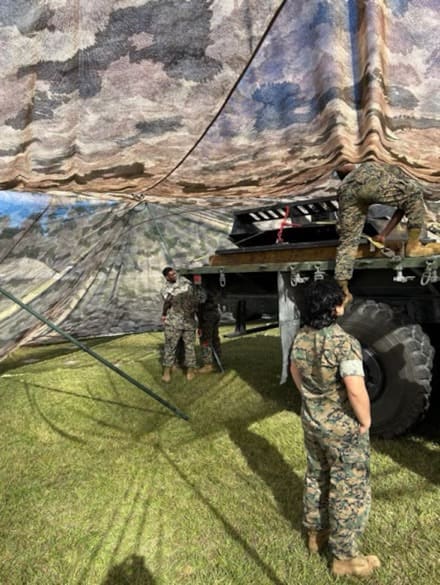
Within this challenging geopolitical context, Marine Corps Systems Command’s PM CSS’ efforts to enhance our forces’ ability to operate undetected in contested spaces—namely thru the modernization of the Corps’ netted camouflage capability—are rendered pivotal.
Recognizing the mounting threat posed by our stated adversaries, the 2018 National Defense Strategy laid the foundation for the Department of Defense’s 2020 Electromagnetic Spectrum, or EMS, Superiority Strategy—a document that emphasizes the EMS as a critical battleground where invisible waves and frequencies become pivotal in modern warfare.
Adapting to this strategy, PM CSS is dedicated to advancing mobile camouflage solutions through the development of the Ultra-Lightweight Camouflage Net System Increment I, or ULCANS INC I, of the Corps’ revolutionary netting capability. This initiative focuses on enhancing visual and electromagnetic concealment across a broad spectrum, including Ultraviolet, Visual, Near-IR, Shortwave-IR, Thermal-IR, and radar, ensuring forces (and their gear) remain undetected in diverse environments.
With the inclusion of both scattering and non-scattering variants, ULCANS offers adaptable stealth solutions to meet diverse operational demands. This system, initially aimed at camouflaging artillery, is exceptionally effective in blending into various terrains, rendering it virtually undetectable. With the new nets weighing about 20 percent less than their predecessors, this bleeding-edge capability enhances both deployment ease and mobility.
Another notable enhancement is the companion mobile application, provided by the vendor, which gives Marines instant access to critical information via their smartphones, further augmenting the system’s utility and ensuring that vital data is always at their fingertips.
Furthermore, in the present security environment—one defined by renewed great power competition– integrating ULCANS is pivotal for enhancing the efficacy of Force Design and operations in contested logistics, particularly within the Expeditionary Advanced Base Operations, or EABO, framework.
“This enhancement significantly improves upon our existing capabilities, offering superior infrared concealment and color matching to operational environments,” said Eric Brown, Deputy Product Manager for Maintenance Support Systems . “It supports the Expeditionary Advanced Base Operations (EABO) concept through ease of deployment and transport.”
Ultimately, this advanced netting system is crucial for concealing and protecting forward-deployed forces and assets in both littoral and broader operational environments, thereby reducing vulnerability to enemy surveillance and strikes. With lightweight sets—weighing between 35 to 40 pounds each—artillery systems, tactical vehicles and trucks, and other key capabilities (including mobile command posts) can be concealed by a small team in less than 30 minutes.
“This fielding is a leap in camouflage technology, providing nets that conceal equipment and personnel from enemy detection across multiple spectrums, including visible and infrared, and reduce radar visibility,” said Theodore Roach, Senior Program Analyst for Shelters, Combat Field Feeding , and Containers Programs . “These innovations not only improve terrain blending but are also lighter and easier to deploy, enhancing operational efficiency and stealth capabilities in diverse environments.”
Force Design and the Joint Force
Force Design—the Corps blueprint for modernization– reconfigures the Marine Corps into a “stand-in force” composed of “compact yet potent units, tailored to engage across the spectrum of competition within contested zones, serving as the vanguard of comprehensive maritime defense.”
One key pillar of this transformative strategy emphasizes the enhancement of joint force and ally interoperability. In this regard, PM CSS has exemplified an intelligent acquisition approach by capitalizing on existing Army relationships to streamline costs and shorten acquisition timelines—ultimately fielding a capability that is easily used across sister services.
According to Roach, “We aligned our purchasing with the Army’s requirements, finding a perfect match with the Marine Corps’ needs. This ensures that whether it’s EABO, supplies, or equipment sharing, it’s seamlessly integrated. Furthermore, when opportunities allow the USMC to sync delivery orders with the Army’s, we will realize reduced procurement through stepladder pricing discounts.”
The collaboration on ULCANS between the Marine Corps and the Army exemplifies a successful joint force endeavor, highlighting the alignment of requirements between the two services. This synergy has facilitated the expedited acquisition of materials, significantly reducing the timeline from requirements definition to material receipt to within a year.
By leveraging existing Army contracts and the groundwork laid in testing and evaluation, the process was streamlined, allowing PM CSS to rapidly access and deploy the camouflage nets. The review of the Army’s test reports, instead of conducting separate tests, sped up the validation process. Consequently, once a fielding decision was made, the nets were quickly delivered, demonstrating an efficient model for future joint acquisitions and interoperability efforts.
Initial fielding of ULCANS began in October 2023 and concluded on 23 December, with training by the New Equipment Training Team already completed. The focus now shifts to expanding the Area of Operations over the next five years, aiming for full operational capability by 2030.
Conclusion
The advent of ULCANS marks a pivotal advancement in the realm of military camouflage, setting new standards for operational stealth and efficiency as the future fight continues to move into the electromagnetic spectrum. By melding cutting-edge technology with strategic interoperability, this system not only enhances the survivability of forward-deployed forces but also fortifies the broader framework of expeditionary logistics. As the geopolitical landscape continues to shift, the integration of innovations like ULCANS will be crucial in maintaining tactical supremacy and shaping the future force—allowing the warfighter to fight and win whenever our nation calls.
By Johannes Schmidt, MCSC Office of Public Affairs and Communication, Marine Corps Systems Command



